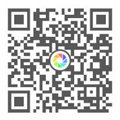
NEWS
Unlocking the World of Learning: The Benefits of Talking Books for Kids
Talking books for kids are an innovative educational tool that combines the joys of storytelling with interactive learning. These devices often use audio recordings synchronized with text, allowing children to listen while they read along. This multi-sensory approach can significantly enhance a child's comprehension and retention of information, making learning more enjoyable and effective.
One of the standout benefits of talking books is their ability to cater to various learning styles. Children who may struggle with traditional reading can find comfort and support in hearing the text read aloud. This auditory component helps bridge the gap for auditory learners and supports those who may have reading difficulties, such as dyslexia. Furthermore, the interactive nature of many talking books encourages children to engage more deeply with the material, fostering a love for reading and learning.
Additionally, talking books can introduce children to new vocabulary and language skills. As kids listen to the correct pronunciation and intonation, they can develop a better understanding of language nuances. This is particularly beneficial for young learners and non-native speakers who are still grasping the fundamentals of language. By hearing words in context, children naturally absorb language patterns, enhancing their overall communication skills.
Moreover, talking books can also promote independence in learning. With the ability to control playback, children can pause, rewind, or replay sections they find challenging. This self-paced approach encourages them to take charge of their own learning journey, building confidence and self-reliance. As they explore various topics at their own speed, they develop a sense of ownership over their education.
Talking books also support critical thinking and comprehension skills. Many talking books incorporate questions or prompts that encourage children to think critically about the content. By engaging with the material beyond just passive listening, children learn to analyze, predict, and connect ideas, further enhancing their cognitive development.
In a world where technology is increasingly integral to education, talking books offer a bridge between traditional literacy and modern learning methods. These tools can be seamlessly integrated into various educational settings, whether at home, in schools, or during travel. They provide a versatile solution for parents and educators seeking to enrich a child’s reading experience.
In conclusion, talking books for kids represent a dynamic educational resource that can transform how children interact with literature and learning. By fostering engagement, language development, and critical thinking skills, these innovative tools create a foundation for lifelong learning. As we continue to embrace technology in education, talking books stand out as a valuable ally in nurturing young minds.
One of the standout benefits of talking books is their ability to cater to various learning styles. Children who may struggle with traditional reading can find comfort and support in hearing the text read aloud. This auditory component helps bridge the gap for auditory learners and supports those who may have reading difficulties, such as dyslexia. Furthermore, the interactive nature of many talking books encourages children to engage more deeply with the material, fostering a love for reading and learning.
Additionally, talking books can introduce children to new vocabulary and language skills. As kids listen to the correct pronunciation and intonation, they can develop a better understanding of language nuances. This is particularly beneficial for young learners and non-native speakers who are still grasping the fundamentals of language. By hearing words in context, children naturally absorb language patterns, enhancing their overall communication skills.
Moreover, talking books can also promote independence in learning. With the ability to control playback, children can pause, rewind, or replay sections they find challenging. This self-paced approach encourages them to take charge of their own learning journey, building confidence and self-reliance. As they explore various topics at their own speed, they develop a sense of ownership over their education.
Talking books also support critical thinking and comprehension skills. Many talking books incorporate questions or prompts that encourage children to think critically about the content. By engaging with the material beyond just passive listening, children learn to analyze, predict, and connect ideas, further enhancing their cognitive development.
In a world where technology is increasingly integral to education, talking books offer a bridge between traditional literacy and modern learning methods. These tools can be seamlessly integrated into various educational settings, whether at home, in schools, or during travel. They provide a versatile solution for parents and educators seeking to enrich a child’s reading experience.
In conclusion, talking books for kids represent a dynamic educational resource that can transform how children interact with literature and learning. By fostering engagement, language development, and critical thinking skills, these innovative tools create a foundation for lifelong learning. As we continue to embrace technology in education, talking books stand out as a valuable ally in nurturing young minds.
RELATED NEWS











